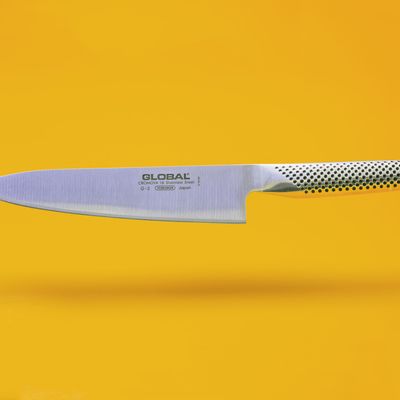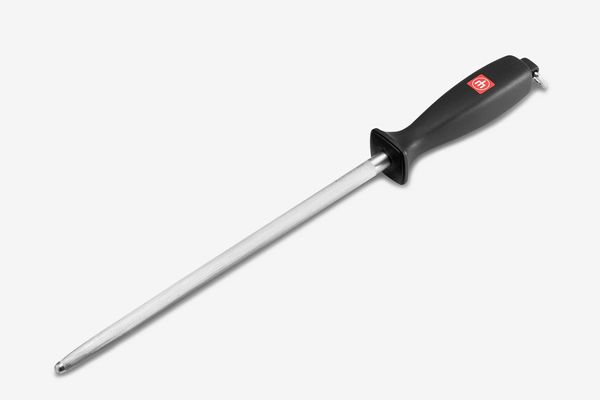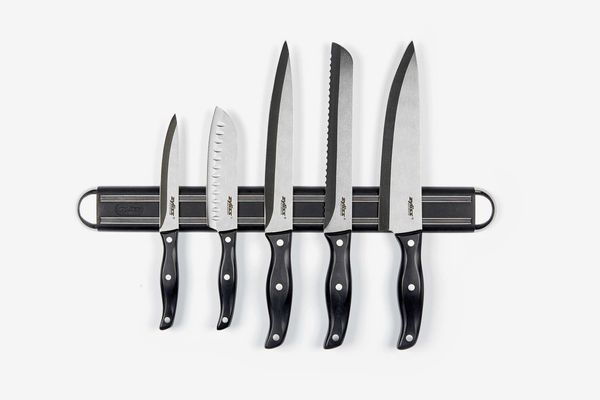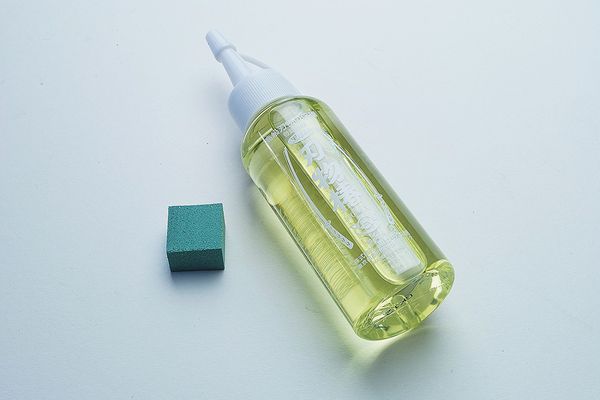
If you’re going to spend more than $100 on a knife — and according to our research, interviews, and at-home test kitchen, we think the best knife for your money is $100 on the dot — it’s worth taking another step or two to make sure that it will last a long time. Durability is, after all, one of the attributes that Tim Love, a Texas chef and restaurateur, says a shopper should look for. To nudge that durability along a bit farther, here are Love’s tips for knife care.
How to sharpen your knives
You don’t, actually. At least not with a sharpening stone. “People at home don’t really use a knife enough to need to sharpen it on a stone,” Love says. “Nobody does.” Instead, take an annual trip to a local knife store and have your blades sharpened by a professional. It takes 30 minutes. In between those trips, Love says to find someone who can teach you to use a honing steel, which looks like a small fencing sword and doesn’t sharpen blades, but helps to keep them from warping, so they stay perfectly straight in alignment.
Trusty brand Wüsthof makes a super to-the-point honing steel — as always, you can buy a fancier one, but this isn’t something you’ll display or even use that often, so that wouldn’t be money well spent.
How to store your knives
“A magnetic strip on the wall is the absolute best way to go; pretty much any will do,” says Love, who adds that wooden blocks can collect germs — if that’s something you worry about. And putting knives in a drawer is a nonstarter: “If you’re clanking knives around, you can chip them and get messed-up edges. But more importantly, if you have a bunch of sharp knives in a drawer, eventually you’re going to cut yourself. If you’re going to put them in the drawer, then I highly recommend you buy some sleeves for them.”
A magnetic strip is like a picture frame: It shouldn’t steal too much attention from the main event, i.e., your knives. This one is 18 inches.
How to wash your knives
A good knife should get a gentle hand-wash. “I like soap and warm water and a little green scrubby pad,” Love says. But, crucially, he says to avoid steel wool, even though you’re using a steel utensil. “Steel wool ends up putting some grooves into the knife blade, and those tend to rust a little bit. Put your knives away bone-dry if you’re using stainless steel.” And if you’re using carbon steel, Love suggests oiling them before putting them away. “Use olive oil or some special mineral oil.”
This Japanese product contains Tsubaki oil, which is known to prevent corrosion on carbon steel. It also comes with a little rust eraser, in case you need to scrub a spot or two.
The Strategist is designed to surface the most useful, expert recommendations for things to buy across the vast e-commerce landscape. Some of our latest conquests include the best acne treatments, rolling luggage, pillows for side sleepers, natural anxiety remedies, and bath towels. We update links when possible, but note that deals can expire and all prices are subject to change.
Every editorial product is independently selected. If you buy something through our links, New York may earn an affiliate commission.








